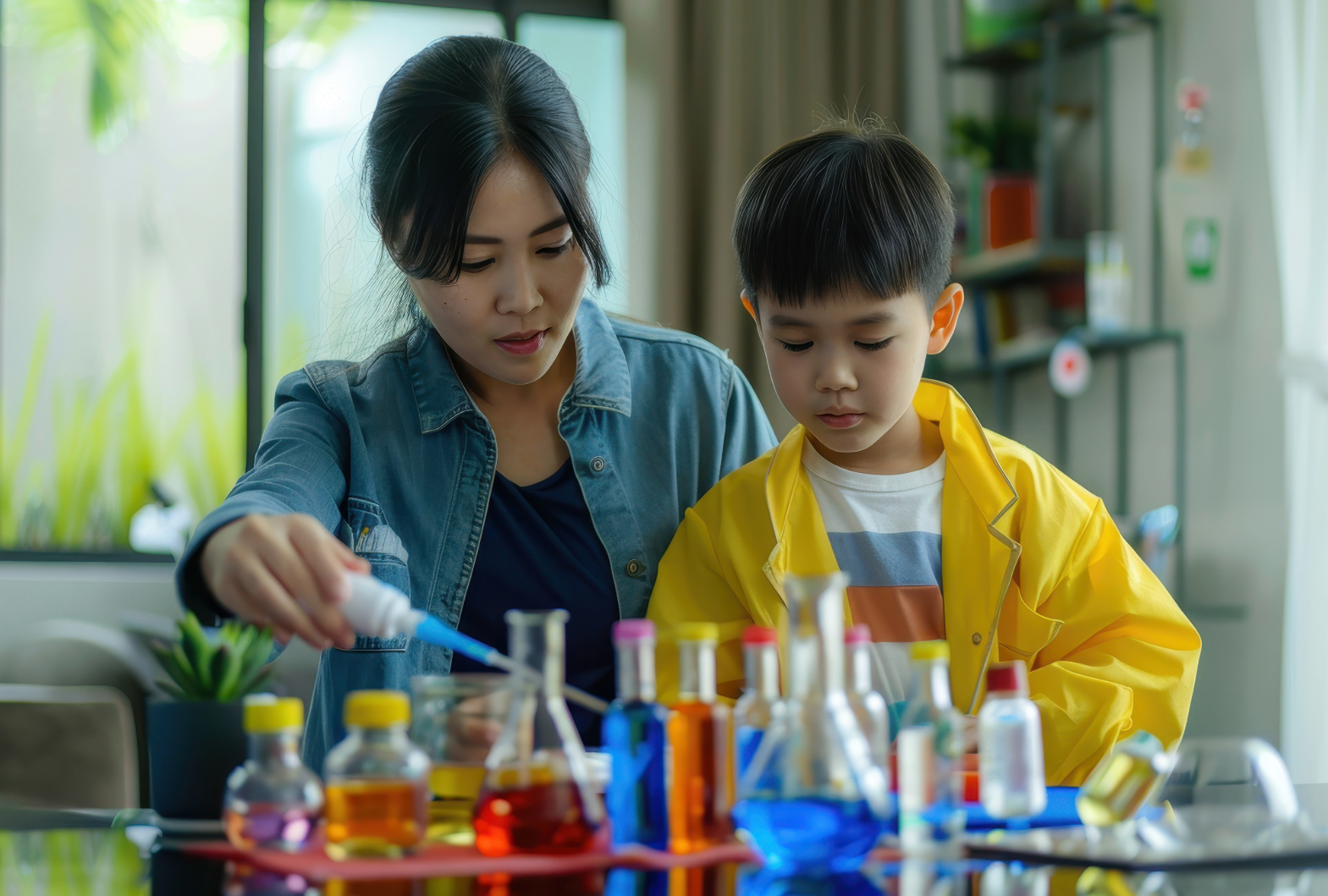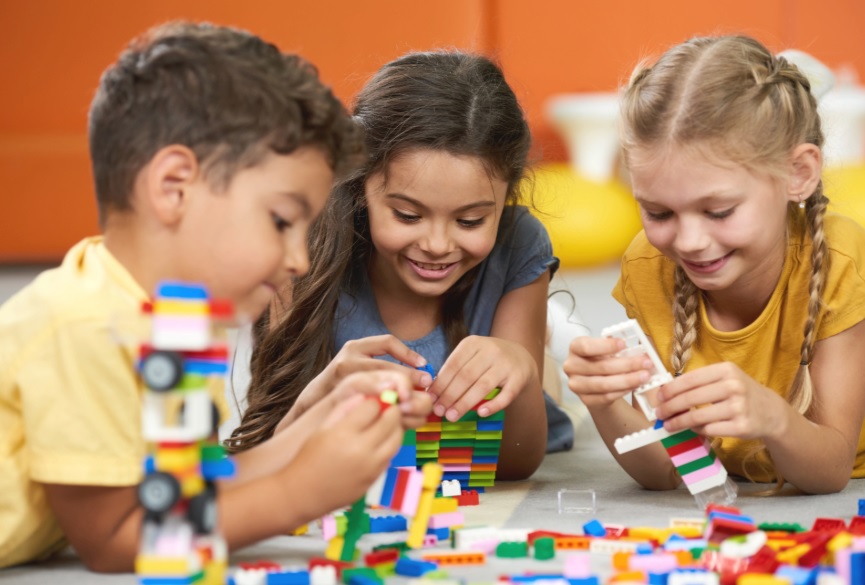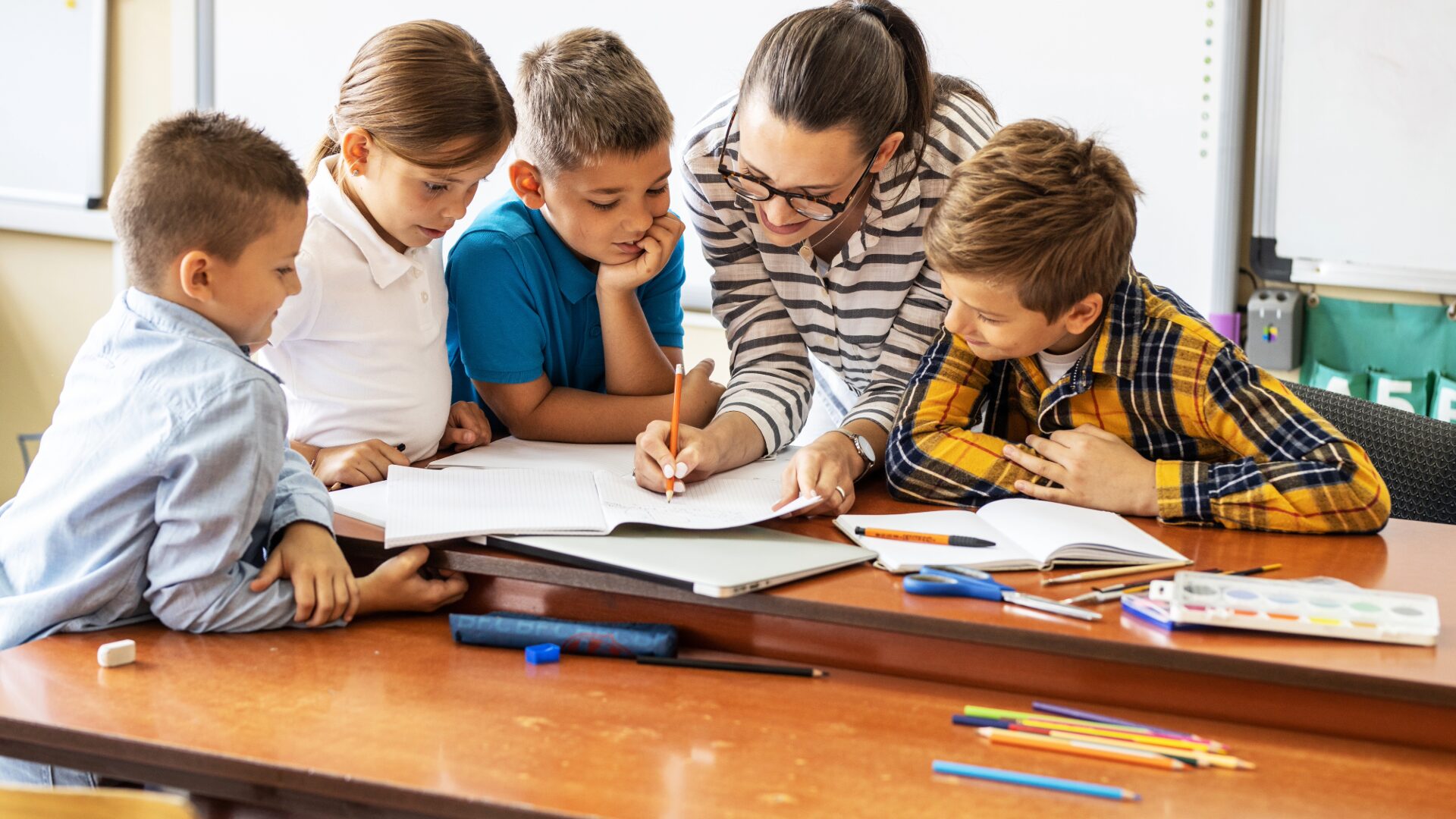Homeschool Curriculum Essentials
How Kids Learn and Why You Should Care
A quick guide to making learning easier for your child
Choosing the right homeschool curriculum can feel overwhelming, but don’t worry—we're here to help! Finding the right fit for your child can be exciting and empowering when you know what to look for. Here are key ideas to keep in mind as you plan your homeschooling journey.
1. The Science of Early Childhood Development
"Brains are built over time, from the bottom up," according to the Harvard Center for Child Development. "Early experiences affect the quality of the brain architecture by establishing either a sturdy or fragile foundation for all of the learning, health, and behavior that follow."
As homeschool parents, this is our opportunity to model healthy, stable relationships and provide consistent routines to develop security and rhythms that kids can learn.
This is also the time to nurture their natural curiosity by exposing them to new experiences, such as making a new friend or visiting a science museum, and helping them understand how to deal with unfamiliar situations, like interacting with the cashier at the grocery store.
For homeschoolers, ensure that both you and your home environment provide a welcoming space for kids to ask questions and receive guidance from you. You should model how to ask questions, observe, and work through problems.

Modeling how to observe and ask questions
are foundational skills in science.

Instead of just reading about airplanes,
take your child to your local airport
to meet and talk with real pilots!
2. Understanding How Kids Learn
"Children differ from adult learners in many ways," according to the
National Academies of Sciences, Engineering, and Medicine. A common mistake adults sometimes make is assuming kids are just little adults. In fact, students lack the extensive background knowledge that adults have, and require foundational instruction and concrete experiences to build their understanding.
Children learn best when their homeschool lessons connect to their personal interests and prior knowledge.
This means having a curriculum steeped in active exploration and discovery, enriched with real teacher interaction and environments that allow students a much deeper understanding.
Homeschool parents can include hands-on projects and experiments to make science and math concepts more tangible and easily understood (and retained!).
3. Learning Through Play
"While parents often see structured play activities (like educational videos) as more valuable for learning, experts regard unstructured activities (such as pretend play) as more beneficial."
According to child psychology researchers, play is the ability to adapt or imagine new realities and doing so because you enjoy it or find it interesting.
When adults introduce specific objectives into an activity and call it play, the distinction between play and work can become blurred.
For instance, using flashcards to help memorize the multiplication tables is work, because of the structured format and focus on achieving a specific goal.
As homeschool parents, we need to recognize that the difference between play and work is important for child development, according to the American Psychological Association.
While structured homeschool lessons are valuable, be sure to also include unstructured time within the homeschool curriculum to encourage creativity, problem-solving, and independence. This can be as simple as incorporating STEM design challenges and open-ended math puzzles and activities.
(Hint - most homeschool science curriculum treat science experiments as an extra thing to do "if you have time", when really it's exactly what you need to be starting the lessons with!)

During your homeschool lessons, unstructured creative time is just as important as the structured lessons. Don't tie yourself to a curriculum made up on only workbooks and tests!
Encourage play through both indoor and outdoor activities throughout the year and select a variety of materials that trigger their interest.
And as a side note - if you want to join in your child's play,
be sure they are in the lead, not you.

Executive skills are like the brain's management system—they help you stay organized, focused, and in control of your actions and emotions.
These skills are crucial for success in academics, social interactions, and everyday life. They develop at different rates for each child and can be influenced by factors like environment and experiences.
4. What Happens When Children Learn
“The tricky part is to grasp the processes developing in the child’s brain and come up with ways to encourage that development."
According to a study by the University of Cambridge, "In early years’ education, playful learning and giving children freedom to explore could help to encourage independence as well as the ability to know when to ask for help, both of which depend on self-regulatory skills.
"If we want to encourage adaptability and self-reliance, we have to look beyond the formal curriculum.”
The study confirmed that the wide variability in children's executive skills accounts for the diverse social and cognitive behaviors that emerge in early childhood. What we learn and apply during this critical stage lays the foundation for our lifelong development.
In a nutshell, learning reshapes the brain by forming neural connections. Repetition, engagement, and emotional relevance (how connected kids feel to the topic) strengthen these pathways.
For parents, this means keeping your homeschool lessons engaging and focused by including challenging puzzles and activities like science experiments, and also include physical activity and movement.
There is so much more to learn than what's in a textbook... and so much more going on inside your child's brain than we can even realize.
5. Students Learn More with Active Learning Strategies
Active learning is a teaching method where students actively participate in their own learning instead of just sitting and listening to lectures (or reading a textbook and spitting back answers).
This means students are asking questions, solving problems, working together in groups, and discussing ideas to understand and apply what they’re learning.
The funny thing is, according to a study done at UC Berkeley, students felt as if they learned more through traditional university lectures, despite the research (and test scores) which revealed students learned more through active-learning strategies!
"This work...debunks the illusion of learning from lectures. It also explains why instructors and students cling to the belief that listening to lectures constitutes learning." (Source: Harvard Education)
In your homeschooling, this means your kids are working together to complete projects, they share their ideas in discussions and debates, do hands-on experiments and activities, and practice solving real problems (instead of watching someone else do it, like the teacher).
You can also incorporate "Think-Pair-Share", which means kids first think about a question, discuss it with a partner, and then share their ideas with the group.
If your child is alone in their homeschooling, you need to make sure they are not learning in isolation. Their studies must include working with others, or they will miss out on a whole area of development entirely and be completely unprepared for the next level.

Research shows that students learn more
and retain information better
when engaged in active learning.

Active learning helps students think critically, solve real-world problems, and stay more interested in the material.

For effective learning, students need to react and respond emotionally and/or intellectually with the concepts they are learning.
For example, when studying decimals, involve your child with real applications: profit and loss statements, paying taxes, and the family budget. Make the concepts real and practical!

6. Tailoring Instruction for Effective Learning
"Effective instruction requires recognizing the unique ways in which learners process information and the factors that influence learning, such as motivation, perception, and experience."
Aviation is one of the few professions that require continuous training of their pilots throughout their entire career. Their education is based on high standards, comprehensive training, and hands-on learning.
According to the FAA's Aviation Instructor's Handbook on the Learning Process (Ch. 3), "All learning is by experience, but learning takes place in different forms and in varying degrees of richness and depth. For instance, some experiences involve the whole person while others may be based only on hearing and memory."
The FAA is highly effective at teaching and educating pilots because they have a highly structured and practical approach to training, safety, and real-world application that has been fine-tuned for nearly a century.
One of the first things instructors are taught is that students do not soak up knowledge like a sponge.
For homeschool parents, you cannot assume that just because you taught a concept to your child that they will remember it.
Also don't assume students can take that math concept (like multiplying decimals), and apply it to calculate the price of apples just because they memorized the standard algorithm. You need to incorporate practical, hands-on applications when you teach concepts to engage students on every level of learning.
The Takeaway
Essentials for Homeschool Curriculum: Building a Strong Foundation for Learning
Children are not born as empty slates (see How Children Learn by the National Academies Press), rather they come with their prior experiences, developing cognitive abilities, and unique perspectives that shape how they understand the world. According to studies on how children learn, they actively construct knowledge by connecting new information to what they already know, using their curiosity and experiences as a foundation.
Unlike adults, their brains are more adaptable. This natural capacity for exploration and discovery shows that children are active participants in learning, not passive recipients waiting to be filled with information. By focusing on these key elements (above), you can create an engaging, meaningful, and effective learning experience for your homeschooler.
Education thrives when curiosity is nurtured, concepts are connected to real-world applications, and students are empowered to explore and discover at their own pace. The best way to do this is through hands-on experiments, discussions that spark creativity, and personalized approaches that align with your child’s learning style.
Just Enter Your Email To Receive
5 Free Hands-On Science Lessons!

Just enter your email and you’ll get instant access to this complete mini-science curriculum.
This free sample program includes:
See how easy it can be for you to go from “Frustrated” about not having enough time or resources for Science… To “Fascinated” by how your kids learn science better than EVER before because now they’re enjoying it!
